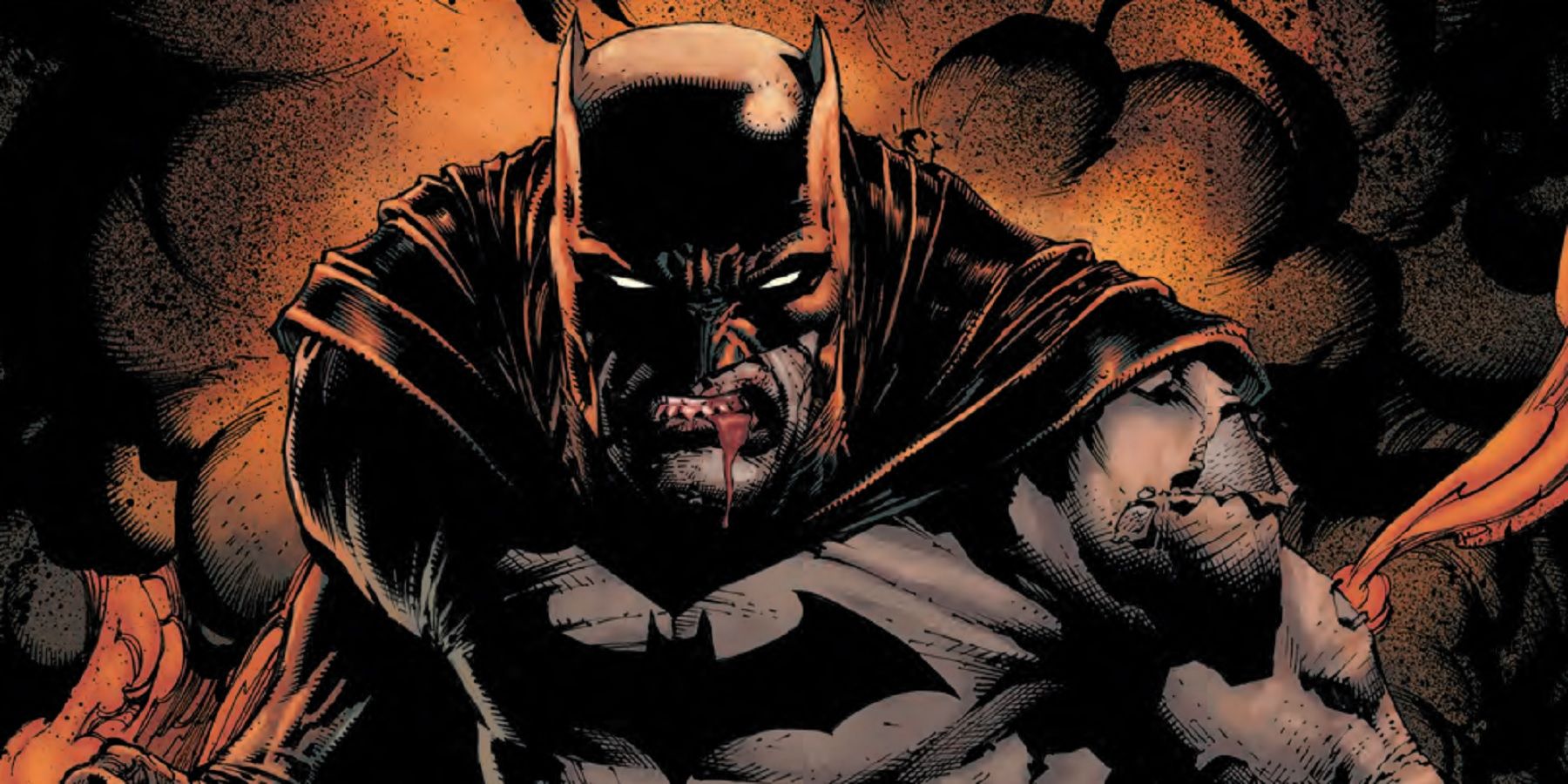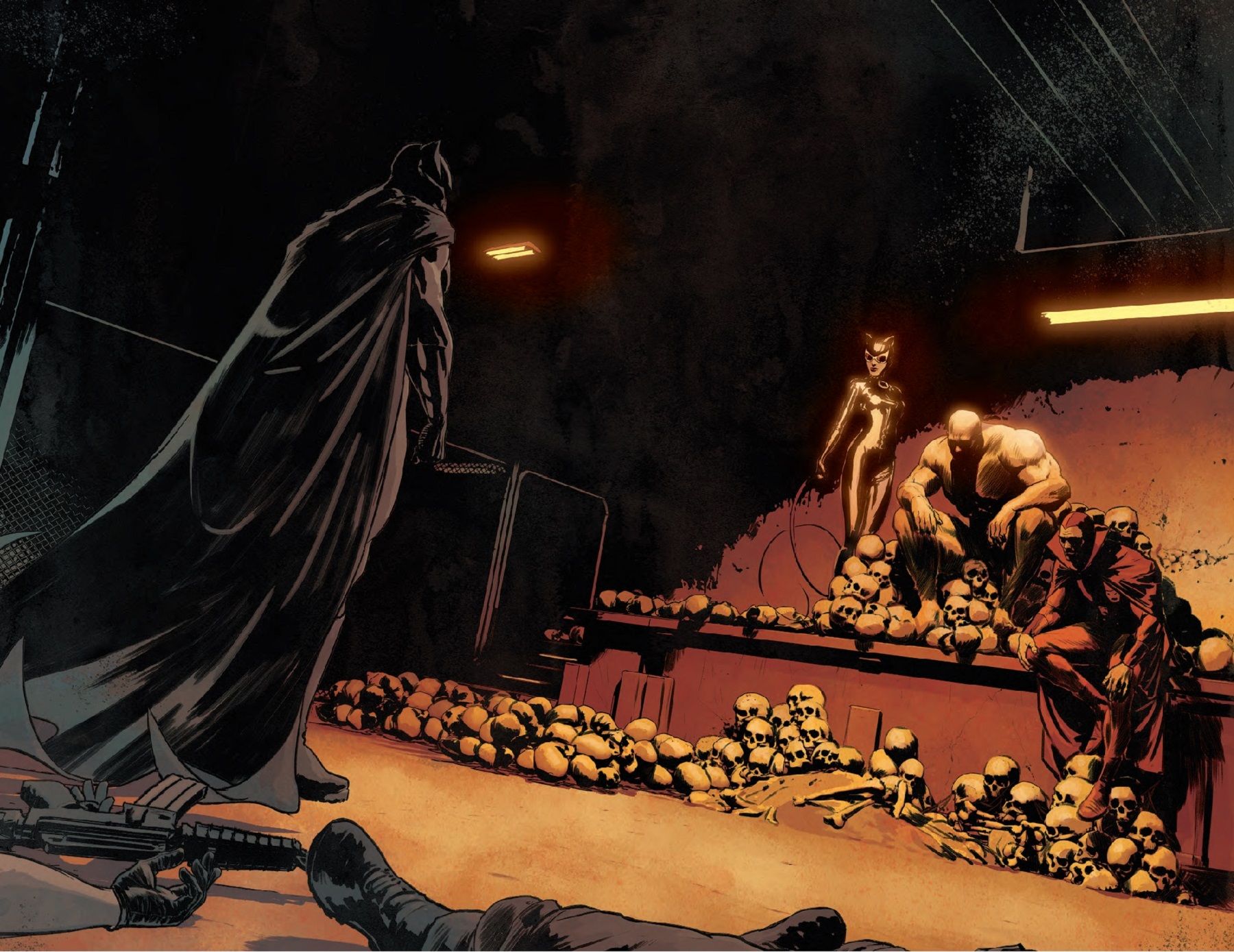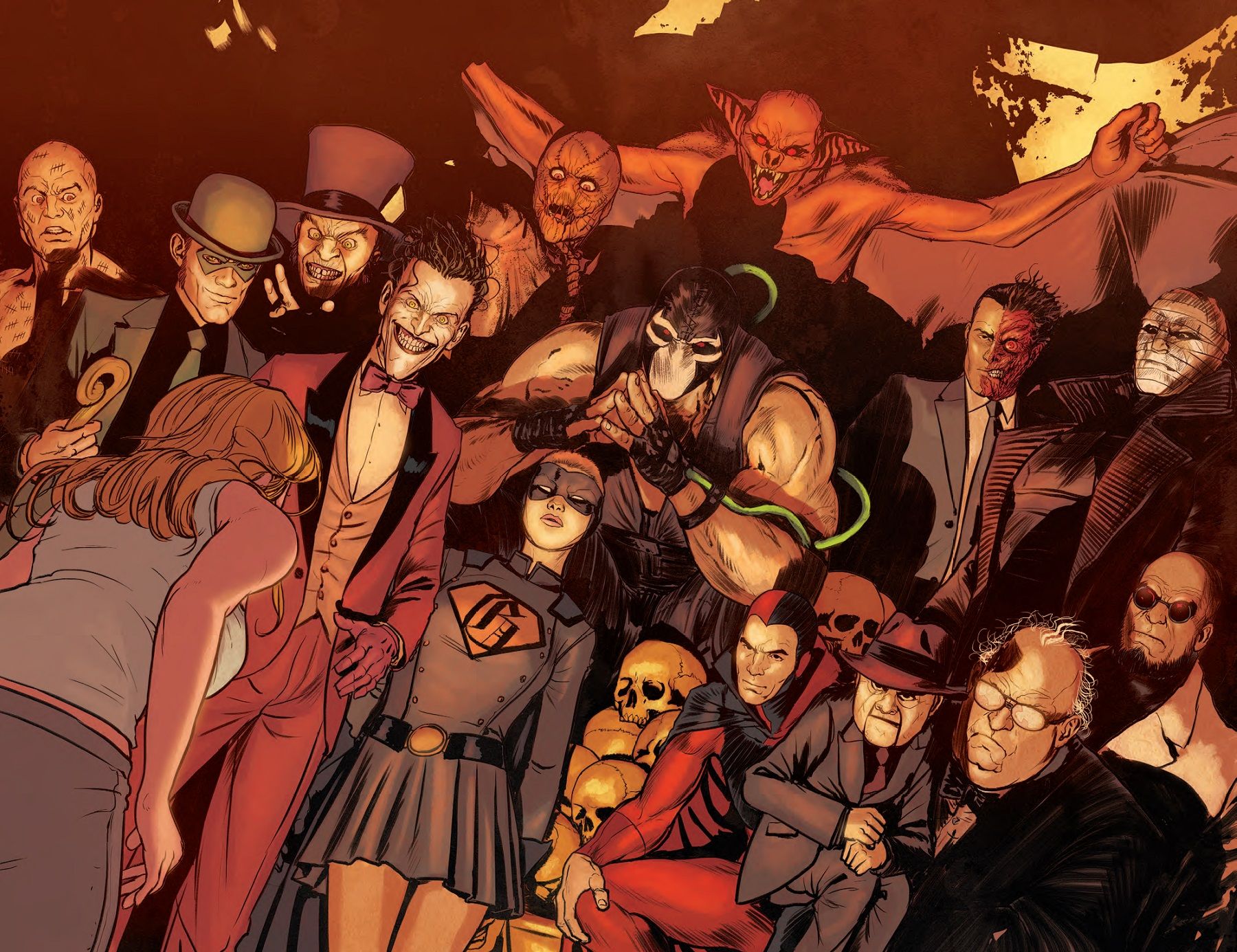SPOILER WARNING: The following article contains major spoilers for Batman #72 by Tom King, Mikel Janín, Jorge Forbes, Jordie Bellaire and Clayton Cowles, on sale now.
Writer Tom King is nearly three years into his Batman run, and what's become clear is the villain Bane is at the center of it. Some of the arcs, though, have seemingly been more standalone, as though to serve as breaks from the main act. In Batman #72, however, King, Mikel Janín and Jorge Forbes reveal that all of the run's arcs might be more connected than they first appeared. And in bringing all these disparate arcs together, King also provides some postdated revelations to the events of these storylines.
Bane's Responsible for That?
Batman #72 opens with a voiceover from Flashpoint's Thomas Wayne, which is not immediately apparent. He goes back to the earliest moments of King and David Finch's Batman #1. The shadowy villain who appeared at the end of that issue – later revealed to be Hugo Strange – has subsequently been one of Bane's allies. Batman #72 shows that the introductory issue to the series wasn't to just remind readers that Strange is one of the key villains in King's story. Strange didn't join up with Bane after that first issue because of their common foe. Instead, the newest issue shows Bane has been manipulating events since the beginning.
Thomas Wayne goes on to speculate on the Ventriloquist's involvement. The Ventriloquist, of course, was part of Batman's de-facto Suicide Squad that stormed Santa Prisca to apprehend Psycho Pirate from Bane's employ. And the Ventriloquist is the only known, and relevant, character able to resist Psycho Pirate's mind control. The Ventriloquist has powers of his own, though, which Wayne also references as relevant. Batman recruited the Ventriloquist against Bane, but Wayne's musings confirm the reverse is also true. After the Santa Prisca incident, Bane might have used the Ventriloquist to get into Batman's head, influencing his subsequent decisions.
If Bane Didn't Do It, He Still Used It
The subterfuge even predates Bane's direct involvement. The flashback "War of Jokes and Riddles" arc took place before the current events of King's story, but nonetheless played into Bane's scheme. As Wayne narrates, Bane did nothing to prevent Bruce Wayne and Selina Kyle's relationship from blossoming. And although Batman had subsequently proposed to Selina, he asked her to belay her answer until revealing to her that he had tried – but ultimately didn't – kill The Riddler.
Selina accepted his proposal regardless, allowing Batman to now dream of a life of true happiness. That's when Bane put The Joker into play, putting forth the notion to Selina that a happy Bruce Wayne would mean the end of Batman. That notion ultimately led to Selina leaving Bruce at the altar – a huge win in Bane's mission to break The Bat.
Before Selina jilted Bruce, there was still a marriage pending, and what kind of friends would Bruce have if they didn't get him any wedding presents? One of those friends was Booster Gold who, in his misguided attempt to get Bruce the best gift of all, ended up bringing about a horrible alternate reality. While none of this sounds like it involves Bane, Wayne reveals the villain was actually very much involved in the events of "The Gift."
Per Bane's orders, The Riddler reprogrammed Booster's electronic pal Skeets to influence an emotionally disturbed Booster. Booster then presumably came up with the perfect gift idea that would make Bruce happy – i.e., a world where he never became Batman. Issue #72 confirms "The Gift" didn't coincide with Bane's goal accidentally; it was instead another event that took place because of his machinations.
Everything Means Something
The recap painstakingly recreates every step of Bane's plan to date – at least as far as Thomas Wayne is aware. It not only brings new readers up to speed, but also reminds existing ones just how excruciatingly methodical Bane is in his mission to break The Bat. Not only does the issue show the extent of Bane's villainy, it also shows that of Thomas Wayne. The Flashpoint Batman wants the mantle all to himself, and his willingness to help Bane break his alternate-reality son is nothing short of draconian in its own right.
Batman #72 doesn't just summarize what's come before, though. Throughout Thomas Wayne's voiceover, Bane's battle with Batman in Wayne Manor continues from last issue, and it's not going so well for the Caped Crusader. Bane gains the upper hand over a weary and emotionally distressed Dark Knight. The encounter culminates in a recreation of the two foes' most iconic moment: Bane breaking Batman's spine during 1993's "Knightfall" arc. The familiar and sickening "crackt" indicates Bane has, in fact, just given Batman another grievous injury, leaving him seemingly broken as Thomas Wayne look on at the issue's end.
Whether Bane literally broke Batman for the second time, or if Batman's injuries are less severe than implied, is unclear. Since upcoming solicitations show the Dark Knight is still in play, Batman's latest injuries will presumably allow for a recovery that will keep him engaged against Bane.
Batman's direct encounter with Bane continues to further King's overall storyline, just as past arcs like "I Am Suicide" and "I Am Bane" were integral chapters as well. Batman #72 shows that the "unrelated" arcs were also part of the bigger picture – and in fact were key components of it. Whatever's yet to come as King's overall storyline cranks along, the issue serves as a reminder to readers to pay close attention going forward.
Batman #73 will feature Bane's involvement, and goes on sale June 19.



